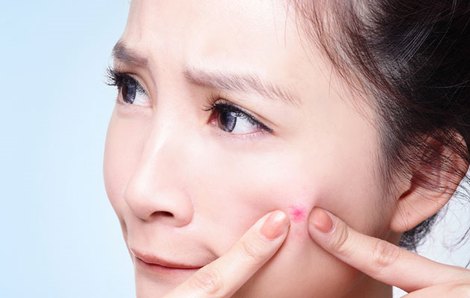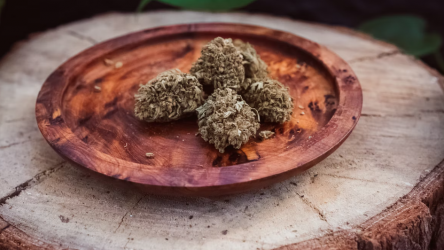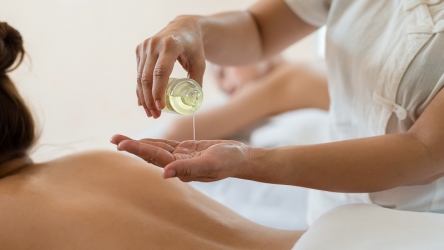
It’s bad enough when you gain weight. But gaining weight and breaking out with acne too seems just plain unfair, especially when you are a teenaged girl. And it’s teenaged girls who are most at risk for acne when they gain weight, because of the interrelationship of weight gain and hormones.
In January of this year the Archives of Dermatology published a paper entitled “A Population-Based Study of Acne and Body Mass Index in Adolescents.” Researchers in Denmark, Norway, the USA, and China looked at the relationship between weight gain and acne in over 3500 teens aged 18 or 19 who lived in Oslo. Not too surprisingly, the epidemiologists concluded that with higher weight, the frequency of acne increased, too. But what is the real relationship between acne and weight gain.
It isn’t that young women get acne and decide to take up eating bonbons as a hobby. And it isn’t that women gain weight and somehow the extra fat starts oozing out of their pores causing nasty zits.

The real relationship—which the mainstream media has missed in its coverage of the article—is that both weight gain and acne are related to the function of the ovaries, and that metabolism in the ovaries is related to another phenomenon called insulin resistance.
Let’s start at the end and work back to the beginning to understand the problem.
There are lots of factors that contribute to acne, but acne does not occur when pores are not clogged. And the first step in closing a pore so that it traps the skin oil known as sebum inside is the excessive growth of skin cells up and down along the opening of the pore.
As skin grows, it pushes outward. The very outermost layer of skin cells dissolves in keratin protein and ceramide “glue” to form an impermeable layer against water (so that the body doesn’t dissolve) and that dirt, toxins, and germs don’t get inside. As more skin cells mature and die, the outer flakes off and for the most part is easily removed by the flow of air over the skin and simple washing of the skin.
Inside a pore, however, the natural direction for a dead skin cell in the lining of the pore is to move in rather than out. Microscopic, invisible flakes of skin accumulate in the bottom of the pore and are pushed out as the pore releases sebaceous oils.
When testosterone levels are high, the pores make more oil. It can flow in such a volume that it pushes against the bottom of the pore. This makes the neck of the pore narrower. The flakes of skin that the oil would ordinarily deliver to the surface of the pore get stuck, and the pore fills with oil. The opening of the pore gets still narrower, and skin grows over the pore, trapping the dead skin cells and sebum inside. At first this forms a whitehead. If there is just enough oxygen in the pore to oxidize the sebum it contains, it can turn into a blackhead. And if acne bacteria trapped inside the pores grow to sufficient numbers that the immune system attacks them with inflammatory compounds, the result can be a pimple or even a nodule or cyst.
But testosterone is a male hormone. Why should high testosterone levels explain acne in teenage girls?
Testosterone is not exclusively a product of the male body. Women’s bodies make testosterone, too. In small amounts testosterone fuels the female libido. In larger amounts it can have the same effects as it does in males, such as the growth of hair and the increased production of oil in the sebaceous glands of the skin. More oil, larger and darker blemishes.
A woman’s body makes testosterone along with other hormones in the ovaries. And that’s where there is a connection to the effects of insulin.
Insulin carries glucose into cells all over the body, including the ovaries. In most of the rest of the body, however, cells can shut down their glucose receptors when blood glucose levels are high. This protects them from an influx of glucose sugar that has to be metabolized to produce energy. Limiting the entry of glucose protects the cell from the free radicals that are released when it “burns” excess sugar.
The ovaries don’t have a mechanism to shut down their glucose receptors and become insulin resistant. When the rest of the body rejects sugar, the ovaries are flooded with sugar. They make large amounts of all of their hormones, including testosterone. This is what causes acne.
But it’s more than just eating too much that causes weight gain. The problem is that insulin resistance primes fat cells to store every possible extra calorie.
Insulin stores not just sugar but also fat. Cells turn off their glucose receptors when they become insulin resistant, but they don’t turn off their fat receptors.
At the same time, the pancreas senses that blood sugar levels have gone up and responds by releasing still more insulin. Most of the body becomes still more insulin resistant, but the ovaries receive even more glucose. The extra insulin parks fat inside fat cells about 300 times more efficiently than it stores fat. Teens (and people of all ages) don’t get fat unless they eat too much, but insulin resistance ensures that fat is stored quickly and efficiently, before it’s possible to work it off.
Acne and weight gain occur at the same time, but one doesn’t cause the other. The real problem is too much sugar.
Reducing the amount of sugar in the diet—it’s not enough just to work out more, it’s also necessary to diet—enough to lose just 3% of body weight, about 4 pounds (2 kilos) in most women, is enough to stop the process that raises testosterone levels and causes acne. You don’t have to master weight control to regain control over acne. But you do have to diet just a little bit to get rid of acne for good.







